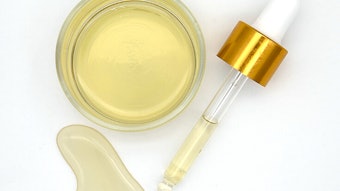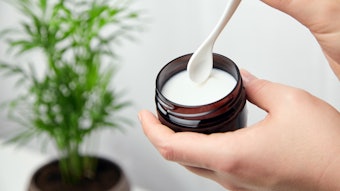To clearly observe the steps required by the formulation chemist in working with naturally derived ingredients, simply referred to here as naturals, one must begin not with the chemist but with the proposition of a marketing request. So, where does the formulation chemist begin when facing a marketing request for a product stamped with a “natural” label claim? The first step is to identify the certifying organization or government under which the formulation is to be sold, to determine whose definition of natural should be considered. Since there is no globally unified definition for what constitutes natural, this information should be outlined and learned at the earliest stages of development to smooth the subsequent path toward intelligent formulation.
In an effort to illustrate the path to meet the challenges of formulating natural products, this article will concentrate on complying with the two primary authorizing organizations in the North American market—Whole Foods Markets (WFM) and the Natural Product Association (NPA). Though these two organizations will be the main focus, readers are reminded that any product sold in the United States must first comply with U.S. Food and Drug Administration (FDA) regulations and pass all necessary safety and regulatory-related tests. Considering this, a regulatory expert as well as a toxicologist should be involved in advising product developers of the necessary requirements, tests, costs and overall time line to completion.
The formulating process for leave-on naturals is, at its base, similar to that for conventional emulsions. However, one key difference is the choice of preservative system, since most preservatives currently used are synthetic—yet the prevention of microbial growth is essential.
Preservatives
The industry often uses parabens, methylchloroisothiazolinone and methylisothiazolinone in conventional products. These will typically not affect the physical properties or stability of formulations. In contrast, when natural preservatives are used, pH may play an important role in maintaining the efficacy of the preservatives, since some preservatives will be effective only at a relatively narrow pH range. Therefore, it is recommended that when selecting ingredients for natural products, the formulator should begin by building from the preservative system; a suggested order of ingredient selection is as follows: 1) preservative or preservation system, chosen based on compliance with the natural association; 2) emulsifiers; 3) oil phase components; 4) antioxidants; 5) viscosity builders and stability modifiers; and 6) benefit ingredients to support intended claims. In addition, cost restrictions must be taken into consideration.
Since the choice of preservatives for naturals is limited and based on ingredients acceptable to a given certifier, one must tailor the preservation system in such a way that the status of the final product as “natural” becomes a foregone conclusion. For example, a combination of phenoxyethanol and ethylhexylglycerin as the main preservation system will allow the incorporation of a wide range of emulsifying systems, since these will be effective at a broad pH range of 5.0 to 8.0. This system will also tolerate the addition of compounds that further enhance preservation, if needed.
If phenoxyethanol is not acceptable by the desired certifier—for instance, as of this writing, the NPA does not allow it—what does one do? The fact that the use of organic acids is preferred by NPA adds yet another layer of complexity, since a formulation pH range of 3.5 to 5.3 needs to support the acidity of the final product for organic acids to function. Thus, the choice of emulsifiers must sustain this pH range. The rub here is clear: It is imperative to identify the preservation system at the earliest possible stage of formulation. And since the choice of preservative limits other ingredients choices, the challenge is directly cost-related. (Editor's note: See the NPA's Letter to the Editor; phenoxyethanol is permitted as an Allowed Synthetic.)
Preservative Boosters
Another strategy to minimize the use of preservatives is to add compounds that exhibit, in addition to their main function, innate preservation activity. Also, as noted, minimizing the free water in a product should be considered; and antimicrobial ingredients that may not be classified as preservatives but are known to improve resistance to microbial contamination. Examples of such compounds are sorbitan caprylate, vegetable-based chitosan and blends of natural essential oils with antimicrobial properties. Note that lowering the pH may improve resistance of the product to microbial contamination, but this will greatly depend on the formulation as a whole.
An example of a lotion that complies with WFM requirements is demonstrated in Formula 1, and an NPA-compliant lotion is shown in Formula 2. Ionizing radiation to eliminate microbial growth is usually prohibited in the case of organic components but may not apply to minerals, which in some cases can retain bacteria. In addition, this type of radiation changes the chemical structure of molecules, and as a general rule, the composition of a natural formulation should strive to resemble its state in nature as much as possible.
Emulsifiers
A relatively wide variety of emulsifying systems are acceptable to the WFM Quality Standards1 and the NPA.2 Examples for cost-effective emulsifiers can range from a neutralized stearic acid to more sophisticated self-emulsifying systems that employ lactylate blends—i.e., stearyl alcohol and sodium behenoyl lactylate; glyceryl stearate, cetearyl alcohol and sodium stearoyl lactylate—or blends of glucosides such as cetearyl alcohol and cetearyl glucoside, and blends of olive derivatives, such as cetearyl olivate and sorbitan olivate.
When making this choice, the formulator must consider the optimal pH resulting from preservation. A practical approach to minimizing the use of preservatives is limiting the content of free water in the formulation to control or eliminate microbial growth, which in most cases requires a water environment. Adding water-soluble humectants such as glycerin or 1,3-propanediol at levels between 3-5% may also reduce the amount of preservative required, and/or allow the selection of milder preservation systems. These humectants may add performance benefits to the products, as they are known as skin moisturizing agents.
Oxidation of Natural Oils
When choosing components for the oil phase, the same rules that hold true for conventional formulas can be applied to naturals. A variety of natural oils may be employed that, depending on the chosen composition, can contribute benefits to the skin but also pose challenges and limitations to formulating. One such limitation is stability; when selecting a combination of oils, it is important to assess their oxidative stability, since this will affect the stability of the final product. For example, jojoba oil, which has a unique molecular structure, is resistant to oxidation, whereas borage oil, which contains unsaturated fatty acids, is highly susceptible to oxidation. Oftentimes, there is a direct correlation between the oil’s number and conjugation of double bonds and its oxidative stability. As a general rule, the higher the level of unsaturation, the higher the susceptibility to oxidation.
Both jojoba and borage oil provide skin benefits, but their respective manner of incorporation into the formulation differs significantly. Based on their individual oxidative stability index (OSI) number (see Table 1), oils with a low OSI numbers are ultimately susceptible to oxidation and should be incorporated into a formula at the very end of the manufacturing process, and preferably at a temperature that does not exceed 45°C.3
Considering that the potential for oxidation limits the use of natural oils, another option is using naturally derived esters in combination with, or as a replacement for, pure oils. Since esters are products of esterification, they are less susceptible to oxidation. Depending on the desired benefits of the final product, the choice of the esters may vary from a light, short chain length to a medium chain, the latter of which normally results in a heavier consistency. Examples of light to medium esters include caprylic/capric triglyceride, coco-caprylate caprate and cocoglycerides. Here, too, formulators should always consult the list of approved ingredients preferred by the chosen certifier. Both WFM and the NPA provide full lists of approved and allowed ingredients on their respective web sites.1, 2
Antioxidants
Oxidative stability is key to maintaining formulation stability and successfully transmitting the finished product’s intended benefits to the skin. However, the oxidative stability of naturally derived emollients can vary considerably. Botanical oils containing less than 5% polyunsaturated fatty acids or fatty alcohols have been found to demonstrate inherent oxidative stability, whereas those with greater than 5% polyunsaturates are inherently unstable.
The use of antioxidants in a formulation could therefore be considered when there is potential for compromised chemical stability and rancidity. It is important to note that with inherently unstable oils, even when antioxidants are used, it may be challenging to prevent rancidity. An example of a widely used antioxidant that is also acceptable by both WFM and the NPA is tocopheryl acetate, also called vitamin E acetate. This antioxidant can be used as part of a blend that contains tocopherols, rosemary, green tea, spearmint extracts and/or their derivatives.
Viscosity and Stability Modifiers
To ensure the long-term formulation physical stability during storage and transport, a variety of biopolymers may be considered—as always, to the prescription of the chosen certifier. Once the acceptable compounds have been identified, an evaluation of their compatibility with the already chosen ingredients and preservatives should be conducted. The industry offers a variety of biopolymers; those that are most commonly used are xanthan gum, carrageenan and sodium alginate. Cellulose derivatives are useful as well; however, they are not always permitted.
Incorporation of Actives
Active ingredients often are included in natural formulas to deliver benefits that substantiate product claims.4 The selection of actives must adhere to the certifier’s standards as well, thus the formulation chemist should request proper documentation, such as an official letter of compliance or certification statement from the supplier of the active ingredient. Examples of active compounds permitted for use by WFM include: panthenol (pro-vitamin B5), palmitoyl glycine and palmitoyl proline. While WFM allows only pure natural components, the NPA leans more towards extract-type active ingredients, such as: Pisum sativum (pea) extract and cyclodextrin, or Vigna aconitifolia seed extract with maltodextrin.
Composing Rinse-off Products
The general rules for choosing raw materials for natural leave-on products can be applied to natural rinse-off formulations. The preservative system, again, must comply with the limitations of the chosen certifier. Even if official certification is not sought, it is a recommended practice to follow a common list of acceptable ingredients so that in the future, the product can be placed with a seller who may require adherence to one or more certifying bodies.
The same pH range and balance discussed for leave-on formulations should likewise be considered here, based on the choice of preservation system. Since many rinse-off formulations are cleansing products, though, they pose an added efficacy challenge to preservative systems, which may lose activity in the presence of surfactants or detergents due to chemical interactions or the generation of micelles that trap the preservative(s) and therefore limit their interaction with bacteria.5, 6
The main practical challenge in formulating a natural rinse-off formulation is achieving the appropriate viscosity. The NPA currently allows the use of sodium coco-sulfate in rinse-off products as a primary surfactant. (Editor's note: See the NPA's Letter to the Editor; coco-sulfate is not allowed in cosmetics, only under the Home Care Standard.) To achieve an acceptable viscosity, in the case of a formulation aligned with NPA requirements, sodium coco-sulfate in combination with other naturally derived surfactants can be used. In general, the viscosity of such a product varies from 2,000 to 5,000 cps. While this may appear as a fairly effective and quick approach, it poses a key challenge. The reason is that sodium coco-sulfate is not an acceptable ingredient on the WFM list of allowed ingredients for premium body care. This may be due to consumer’s negative perception attributed to the term sulfate. Therefore, an ongoing discussion with one’s marketing team must take place to design a proper formulation from the beginning of the process.
The most commonly employed combination of surfactant systems in rinse-off products falls under the category of alkyl-polyglucoside systems (APG). Within this category are the widely used sodium cocoyl sarcosinate, sodium lauryl sulfosuccinate, sodium lauroyl lactylate, and a variety of blends thereof.7, 8 These compounds provide mild and efficient cleansing, excellent foam creation and a pleasant after-feel. Note that there is presently a debate with respect to the use of cocamidopropyl betaine in products meant to comply with WFM requirements. Its use may signal product scrutiny before the product even hits the market due to the possible inclusion of a nitrosamine contaminant in the compound, as well as the fact that it may be petroleum-derived.9
While the industry has made significant progress in developing environmentally friendly and sustainable surfactants, such progress is limited; typically, natural products present viscosity and flow limitations, in comparison with conventional products. As noted previously, an alternative method to generate viscosity is through the use of natural biopolymers such as xanthan gum, carrageenan, sodium alginate and cellulose derivatives, where accepted. Different types of guar gum derivatives may be incorporated as well, though some are restricted by the NPA and WFM, depending on the quaternary ammonium nature of derivatives. Typical examples for rinse-off formulations that comply with NPA and WFM standards, respectively, are presented in Formula 3 and Formula 4.
The ‘Organic’ Claim
In discussing natural products, probably the most controversial topic is the organic claim. Currently, in the United States, the only products that can officially be labeled as organic are those that have been certified by the National Science Foundation (NSF) and/or the U.S. Department of Agriculture (USDA). These bodies established a certification program that, once compliance is achieved, allows the use of an official organic certification seal. Since USDA certification mostly refers to food products, the NSF has developed its own requirements as part of ongoing efforts to encourage participation in the manufacture of personal care products using organically grown ingredients.
However, the transparency of supply chain and issues related to the allowed chemical processing are limiting this market. It presents an ongoing challenge in the creation of formulations, especially in the choice of preservatives. The discussion of organic-certified cosmetic and personal care formulations is beyond the scope of this paper, and readers are encouraged to study the limitations and opportunities that organic certification presents. A comprehensive summary can be found elsewhere.10
Summary
Formulating products for the natural market remains challenging. Despite ongoing efforts to find common ground and harmonization in regulating and defining what constitutes natural, the major associations’ requirements do not align with one another. In addition, methodologies regarding product manufacturing processes, which would aid companies in complying with certification requirements, are neither fully nor clearly defined.
The personal care and cosmetics industry in North America is making efforts to align itself with the most impactful organizations, such as WFM and the NPA, and manufacturers of raw materials often negotiate approvals directly with certifiers. It is crucial that both the formulation chemist and the marketing professional develop an understanding of the requirements and limitations of product design and production in order to ensure that their formulation complies with the requirements of whichever certifying mandate they choose.
Acknowledgments: Special thanks go to Andrew Chachula, for his contributions to this article.
References
1. www.wholefoodsmarket.com/about-our-products/quality-standards (Accessed Jan 6, 2014)
2. https://naturalproductsbuyersguide.com/ (Accessed Jan 6, 2014)
3. JH Brown, R Kleiman and M Cummings, Oxidative stability of botanical oils in color cosmetics, Cosm & Toil 117(1) 59-64 (Jan 2002)
4. JW Wiechers, J Hadgraft, BC Finnin and MS Roberts, Delivering on time, in full and on target, Cosm & Toil 123(5) 64-68 (May 2008)
5. www.tijst.net/issues/1997/no2/1997_V2_No2_10.PDF (Accessed Dec 5, 2013)
6. http://onlinelibrary.wiley.com/doi/10.1111/j.2042-7158.1966.tb07969.x/abstract (Accessed Dec 5, 2013)
7. JW Cook, Acyl lactylates—Applications for a multi-functional group of alpha hydroxy acid derivatives, Cosm & Toil Mfr Worldwide p 86-97 (1996)
8. JW Cook, Influence of acyl lactylates on the foam character produced by cocoamidopropyl betaines and alkyl polyglucosides, Cosm & Toil Mfr Worldwide (2000)
9. www.heraproject.com/files/45-HH-E101023F-D12F-6A30-DEB0770E9BF8E4D0.pdf (Accessed Jan 6, 2014)
10. N Dayan and L Kromidas, eds, Formulating, Packaging and Marketing of Natural Cosmetic Products, Wiley and Sons, NY (2011)










